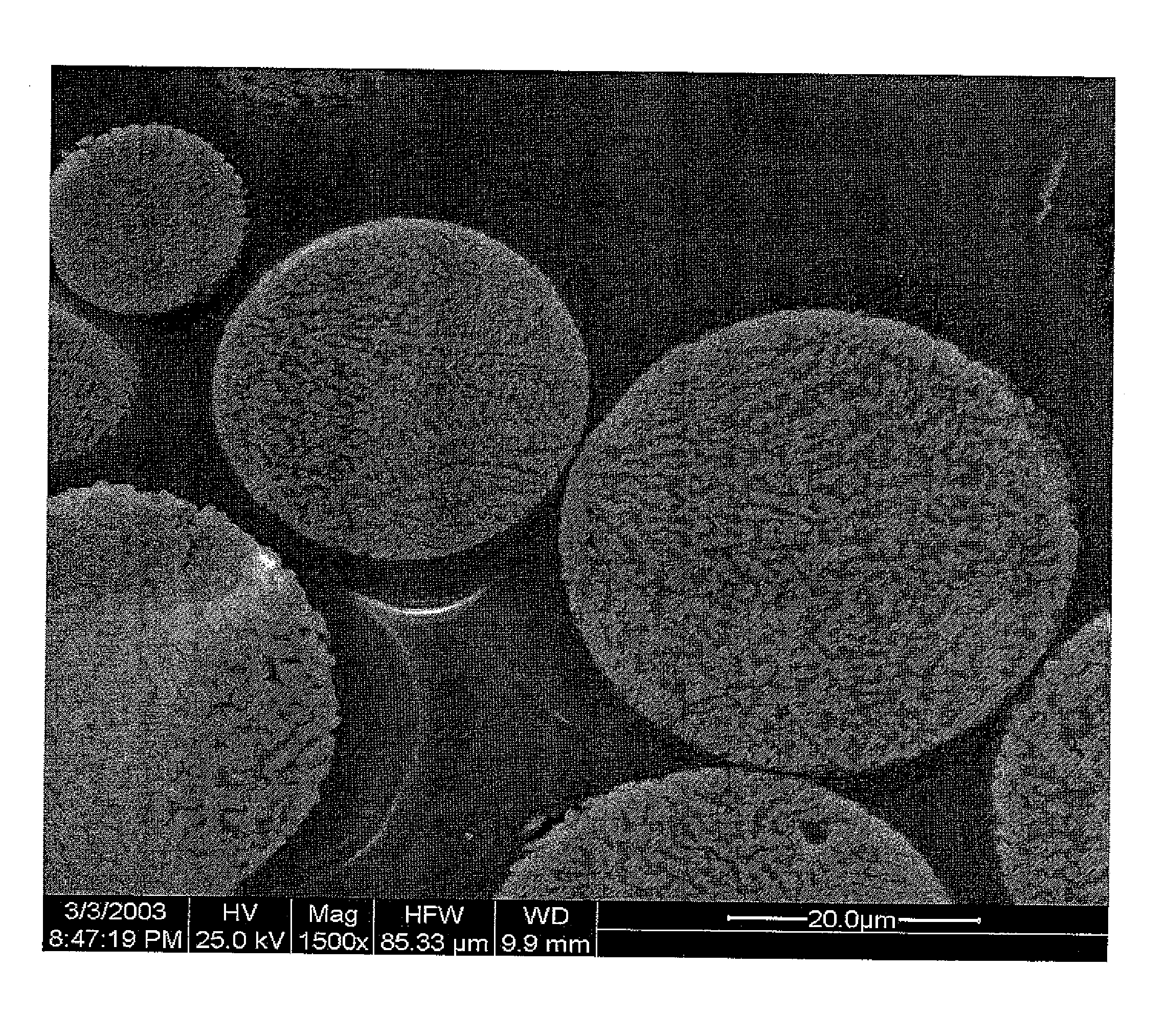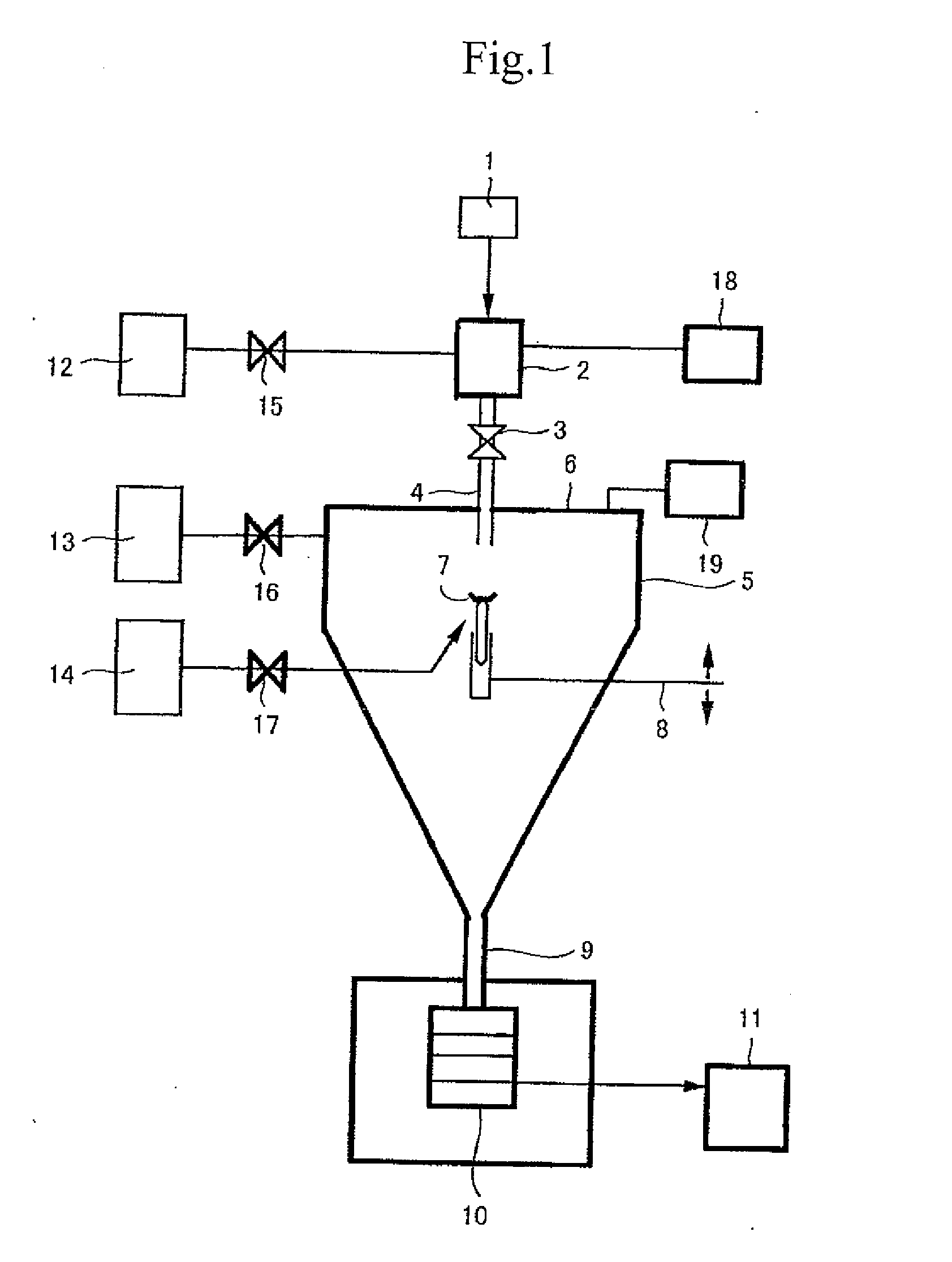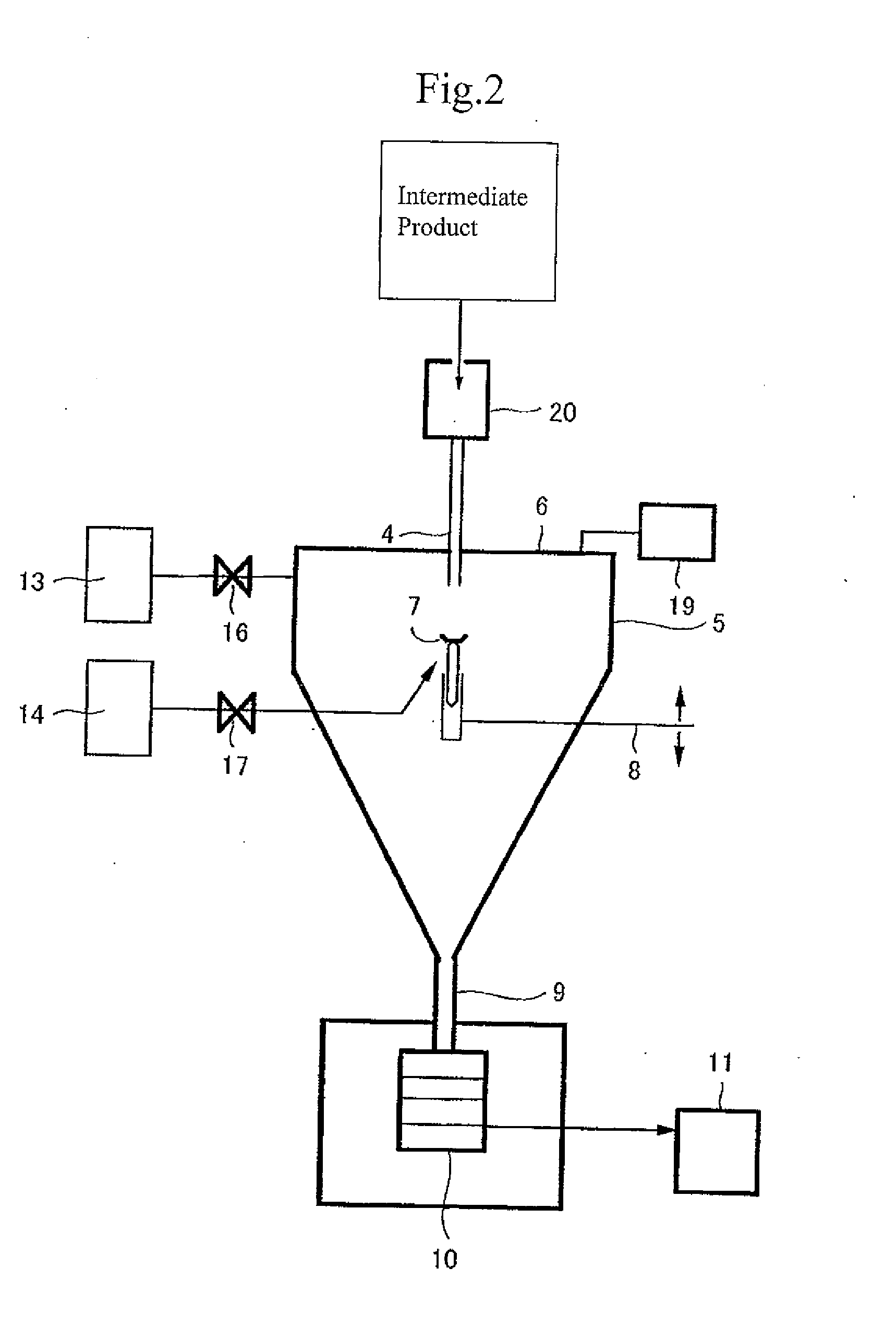Spherical particles having nanometer size, crystalline structure, and good sphericity and method for producing
a spherical particle and nanometer technology, applied in the field of nanometer-size spherical particles, can solve the problems of inferior sphericity, particle unsuitability for practical use, inferior sphericity, etc., to avoid oxidation, improve properties, and good properties
- Summary
- Abstract
- Description
- Claims
- Application Information
AI Technical Summary
Benefits of technology
Problems solved by technology
Method used
Image
Examples
example 1
(a) Production of Intermediate Product
[0070] The centrifugal granulation apparatus as shown in FIG. 1 was used to produce an intermediate product including spherical particles. A starting material used was an alloy containing indium (In), tin (Sn), gallium (Ga), and bismuth (Bi).
[0071] The alloy was fed to an electric oven 2, and molten. The molten alloy passed through a nozzle 4 to be fed to the granulation chamber 5. In the granulation chamber 5, the molten alloy was fed onto a dish-shaped rotary disk 7 and then atomized into droplets by the centrifugal force created by the high-speed rotation of the dish-shaped rotary disk 7. The droplets were quenched. Thereby, spherical particles were obtained. In this step, argon was used and the pressure in the granulation chamber 5 was about 0.3 MPa. The dish-shaped rotary disk 7 had a diameter of about 35 mm and a depth of about 5 mm.
[0072] The intermediate product had an averaged particle size of about 15 μl. FIG. 5 is a SEM image of th...
example 2
(a) Production of Intermediate Product
[0080] An intermediate product was prepared in substantially the same manner as that described in Example 1 except that a starting material used was silicon (Si) with a purity of about 99.999999999%.
[0081] The intermediate product included spherical Si particles having a single-crystalline structure and had an average size of about 15 μm.
(b) Production of Final Product
[0082] A final product was produced in such a manner that the intermediate product was treated by the apparatus shown in FIG. 2. Argon was used as a gas.
[0083] The final product included fine spherical particles mostly having a size of 100 nm or less and a sphericity of about −1% to +1%. The first and final products were made of Si.
[0084]FIG. 10 is a TEM image of the final product. FIG. 10 illustrates that the fine spherical particles of the final product had substantially complete spherical shape.
[0085]FIG. 11 is a TEM image of the final product shown in cross section. This...
example 3
(a) Production of Intermediate Product
[0092] An intermediate product was prepared in substantially the same manner as that described in Example 1 except that a starting material was Si with a purity of about 99.999999999%. The intermediate product included spherical Si particles having a single-crystalline structure and had an average size of about 15 μm.
(b) Production of Final Product
[0093] A final product was produced using the intermediate product and the apparatus shown in FIG. 2. A gas used was oxygen. The final product included fine spherical silicon dioxide (SiO2) particles mostly having a size of 100 nm or less and a sphericity of about −1% to +1%. The intermediate product contained Si and the final product contained SiO2.
[0094]FIG. 9 is a TEM image of the final product. FIG. 9 illustrates that the SiO2 particles of the final product had substantially complete spherical shape. A particle centered in FIG. 9 has a grid-shaped portion indicated by Arrow A and an unclear por...
PUM
| Property | Measurement | Unit |
|---|---|---|
| particle size | aaaaa | aaaaa |
| particle size | aaaaa | aaaaa |
| size | aaaaa | aaaaa |
Abstract
Description
Claims
Application Information
 Login to View More
Login to View More - R&D
- Intellectual Property
- Life Sciences
- Materials
- Tech Scout
- Unparalleled Data Quality
- Higher Quality Content
- 60% Fewer Hallucinations
Browse by: Latest US Patents, China's latest patents, Technical Efficacy Thesaurus, Application Domain, Technology Topic, Popular Technical Reports.
© 2025 PatSnap. All rights reserved.Legal|Privacy policy|Modern Slavery Act Transparency Statement|Sitemap|About US| Contact US: help@patsnap.com



